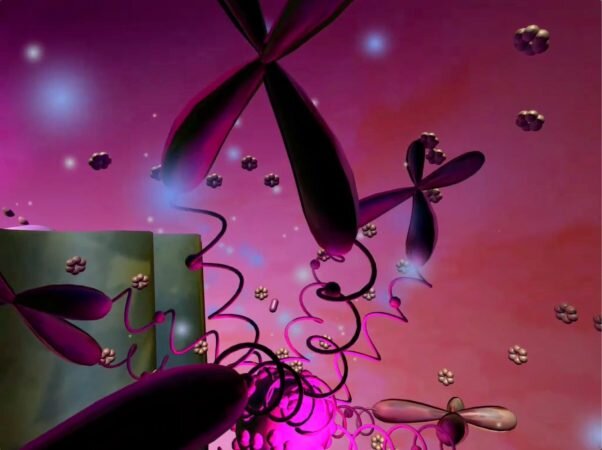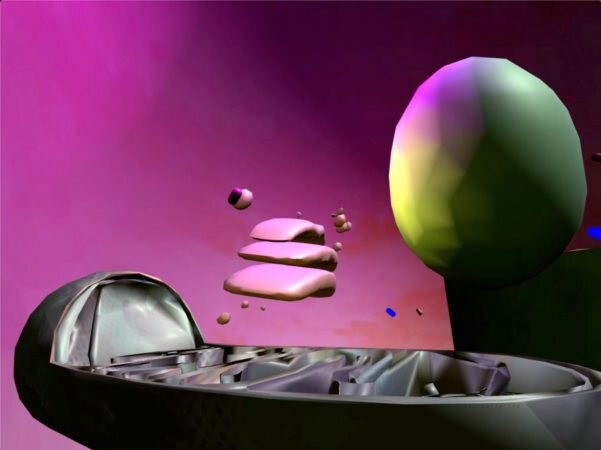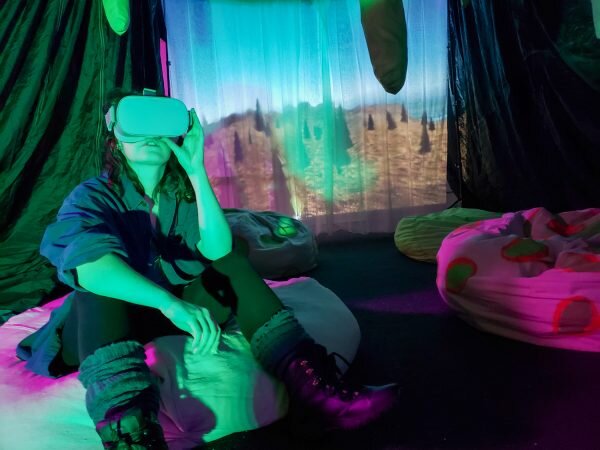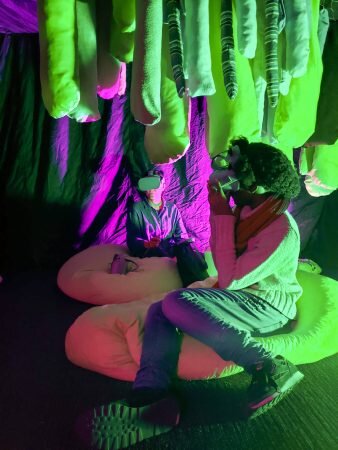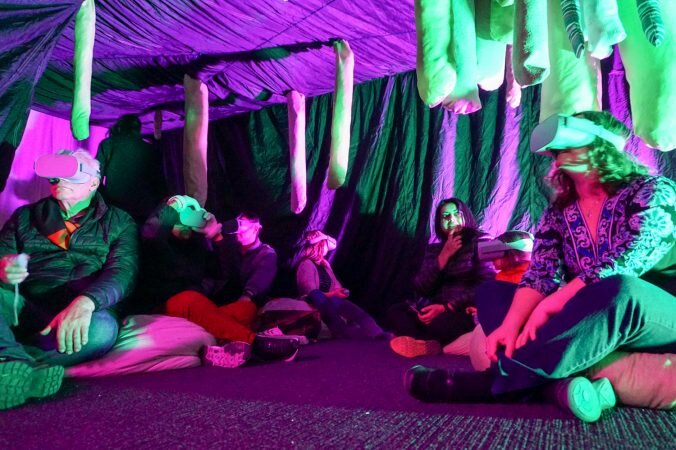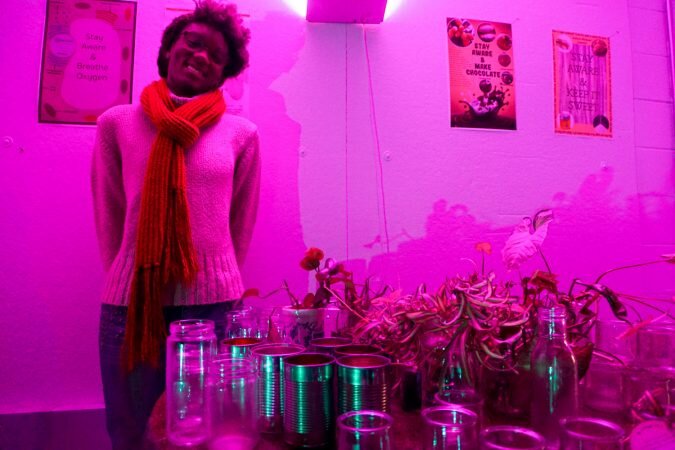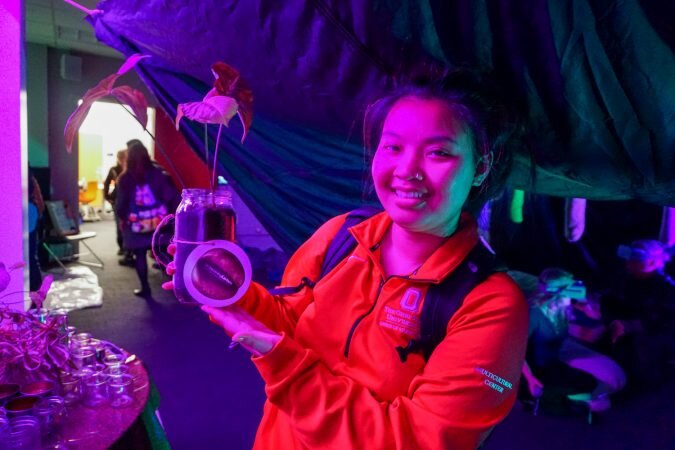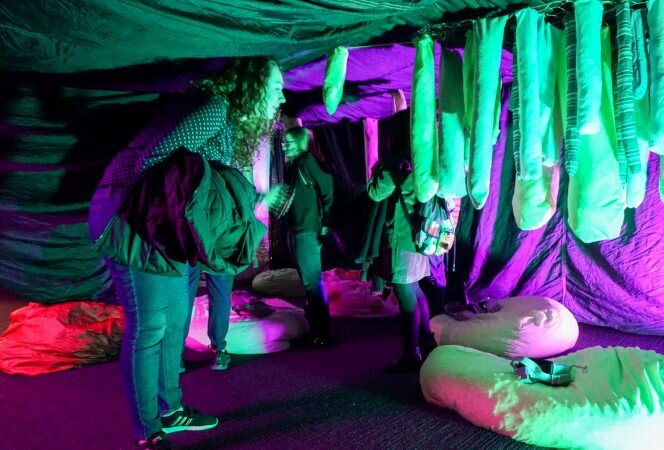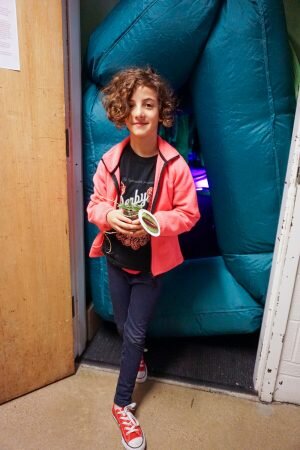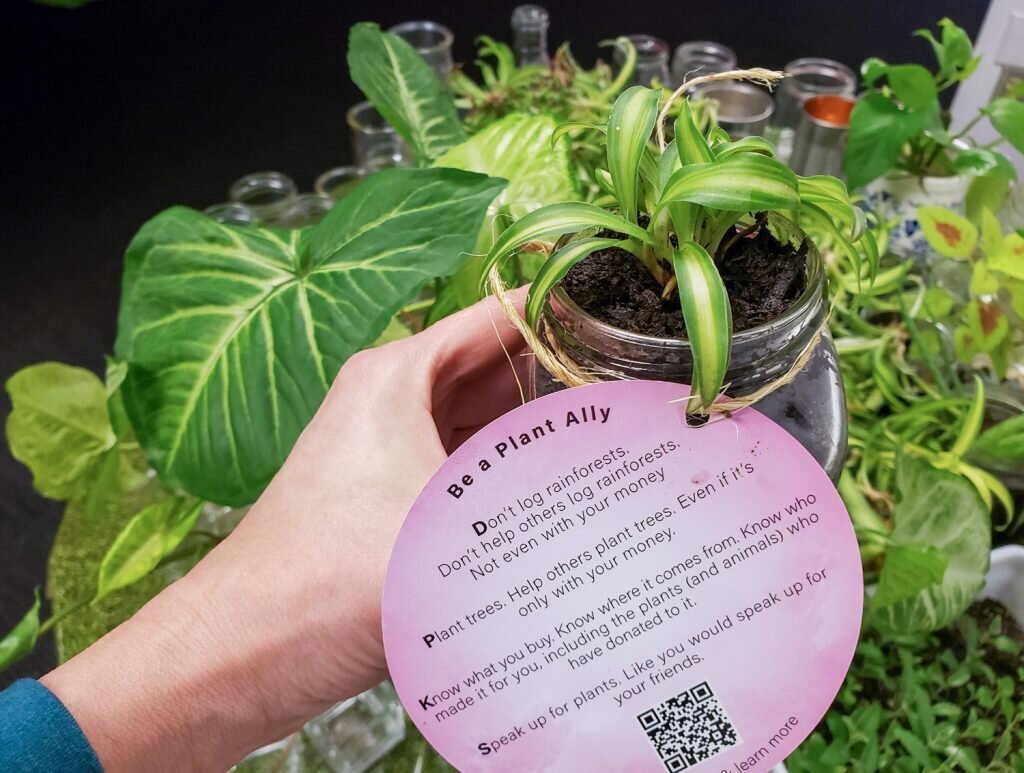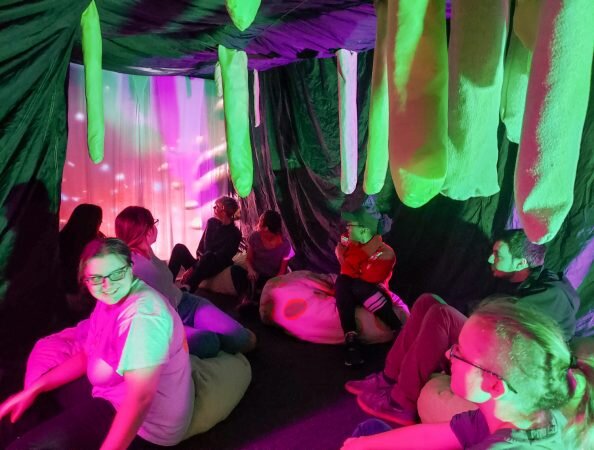By Amy Youngs
The first migrants emerged on land from the oceans 3.7 billion years ago. Called Stromatolites, they got to work without delay, their largest contribution being the production of oxygen. For billions of years, vegetal life has influenced the earth at a grand, geological scale. Entering the Anthropocene, re-binding the carbon released by people might have become their greatest challenge of all.
Un-becoming Carbon: Traveling in Intercellular Space focuses on the importance of carbon sequestration by plants. The viewers enter the plants’ intercellular space, beginning their journey as a molecule of carbon dioxide, donating their carbon to the plant’s body, and emerging as life-giving oxygen. The interactive installation explores this process through physical, audio and virtual experiences. Entering a giant leaf through a stomatal opening, the viewers are surrounded by sculptural plant cells. Palisade Parenchyma droop from above while below Spongy Parenchyma and Stomata line the floor. Soft structures invite viewers to rest and continue their experience by entering virtual reality. An exploration between the macroverse and the microverse begins in a forest where the viewers take on the role of a carbon particle being absorbed into a leaf; first traveling through intercellular space, then moving into a cell to become part of its substance.
Un-becoming Carbon: traveling in intercellular space 2019
Materials Virtual reality experience, fabric, wire, plants, soil, water, projector, recycled foam, reused plastic bags, reused cans and jars.u
Exhibited Ohio State University Department of Art exhibition, Non-Human Intelligence
Created by Ellie Bartlett, Jacklyn Brickman, Ashley Browne, Amanda Buckeye, Diva Colter, Mona Gazala, Youji Han, Saba Hashemi Shahraki, Brice Jordan, Liam Manning, Iris Meier, Brooke Stanley, Lily Thompson, Zachary Upperman, Stephen White, Taylor Woodie, and Amy Youngs.
Concluding the experience, visitors are invited to adopt and nurture a living plant propagule to continue its carbon-binding work in their own home. Information about how to become a good plant ally is given out, along with plant awareness posters, as souvenirs of intercellular space travel.
This collaborative art installation was created in an Art & Science class at the Ohio State University. Team members: Ellie Bartlett, Jacklyn Brickman, Ashley Browne, Amanda Buckeye, Diva Colter, Mona Gazala, Youji Han, Saba Hashemi Shahraki, Brice Jordan, Liam Manning, Iris Meier, Brooke Stanley, Lily Thompson, Zachary Upperman, Stephen White, Taylor Woodie, and Amy Youngs.
Special thanks to our supporters:
Livable Futures, a project of the Global Arts and Humanities Discovery Theme, in partnership with the College of Arts and Sciences Technology Services, the Department of Art, and the Department of Molecular Genetics at the Ohio State University.
And thanks to the following individuals who presented in our class:
Candace Thompson, Dr. Peter Curtis, Dr. Anna Dobritsa and Eduardo Acosta.
